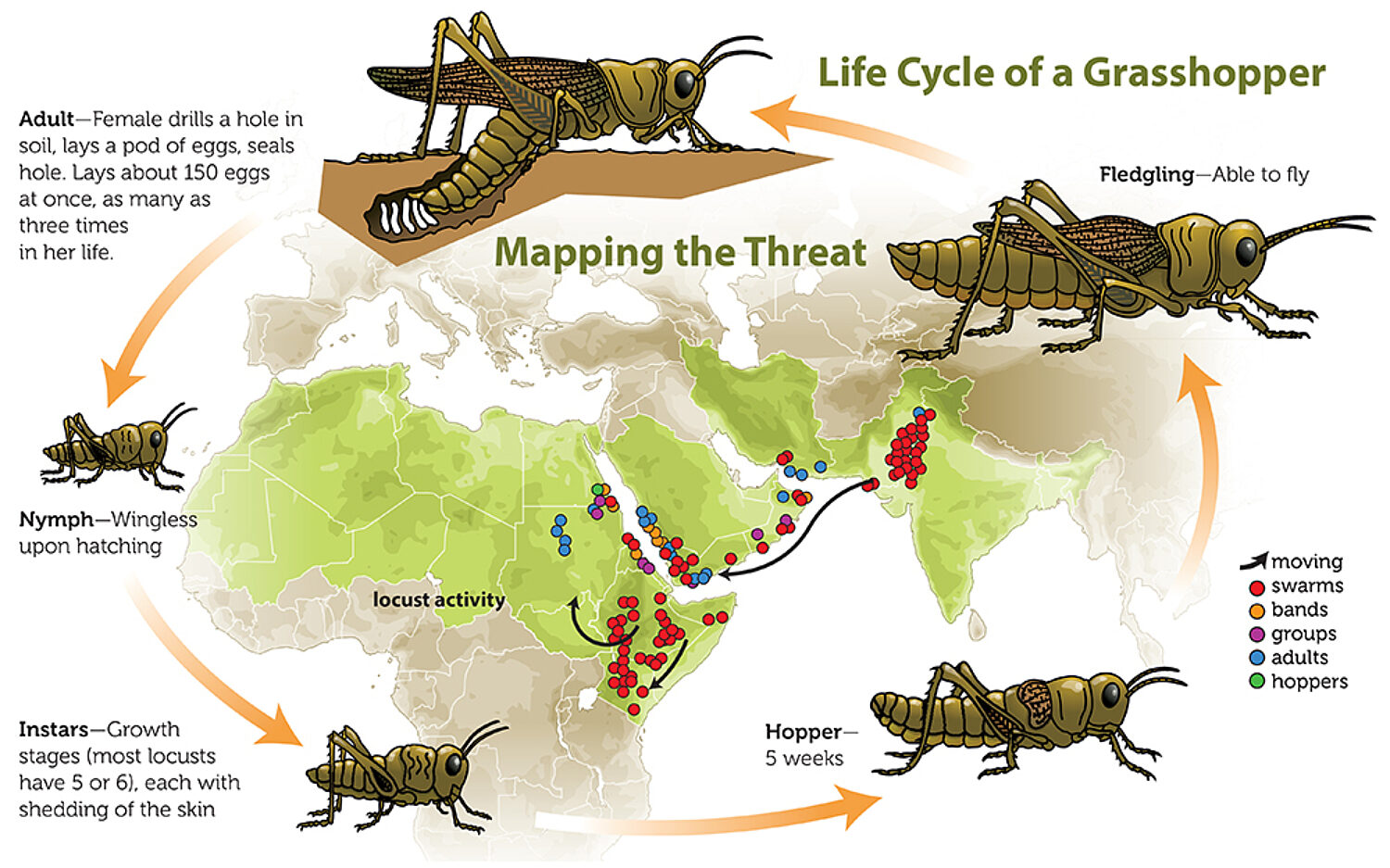All locusts are grasshoppers, but not all grasshoppers are locusts. Locusts are a type of grasshopper that changes appearance and behavior when individuals group together.
The Food and Agriculture Organization of the United Nations keeps a close watch on locusts.
Satellites can detect very large clouds of locusts. But the best way to predict where locusts will swarm is by putting together a variety of information.
If it all seems like a lot of fuss, consider the swarms of 2004. After several quiet years, many nations quit paying attention to locust activity and prevention . . . until too late, that is.
Here’s what happens: In West African countries, eggs hatch and nymphs grow into hoppers, then fledglings, and then adult insects. At first, they are quiet and solitary. But conditions change. Locusts start crowding after food and water. In bumping and nudging, a sensitive area on their back legs gets “tickled.” That triggers a chemical change. Locusts change color, size, and behavior.
In 2004, desert locusts in Africa began to make those changes. The once-solitary insects formed swarms of up to 80 million bugs per square mile. The locusts ate their body weight in plants each day. They chewed crops down to the ground in vast regions. Up to 60 countries were affected.
















